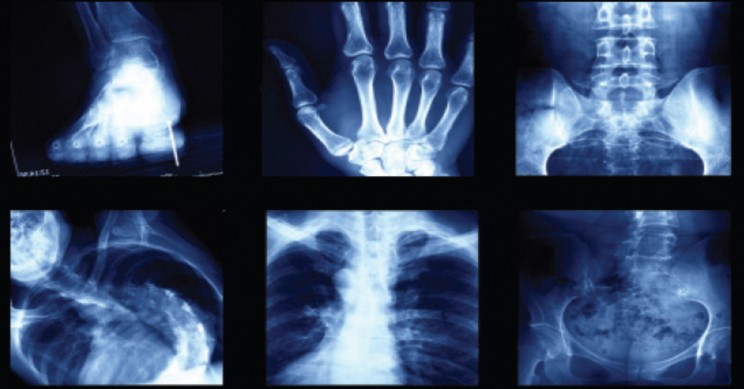
The Camp Lejeune water contamination is a well-known environmental disaster that affected countless individuals living or working on the North Carolina military base between 1953 and 1987.
However, the health impacts of the contamination extend beyond the first generation of individuals who were exposed. In recent years, there has been growing concern about the potential health impacts on the second and third generations of those who lived at Camp Lejeune.
This article will explore the lingering effects of Camp Lejeune water contamination on the second and third generations and the challenges they face in seeking compensation for their health problems.
A Brief Overview of the Camp Lejeune Water Contamination
Camp Lejeune is a U.S. Marine Corps base located in North Carolina that was the site of a major environmental disaster involving contaminated drinking water. For decades, the water at Camp Lejeune was contaminated with toxic chemicals, such as perchloroethylene (PCE) and trichloroethylene (TCE), which were used in various industrial processes on the base. As a result, thousands of military personnel, their families, and civilian workers suffered exposure to these harmful chemicals, with devastating consequences.
The contamination has been linked to various serious health problems, including various types of cancer, reproductive issues, neurological disorders, and birth defects.
In response, the affected U.S. Marines and their family members have filed a Camp Lejeune lawsuit, seeking compensation for their injuries related to the contaminated water at Camp Lejeune. The Justice Act was also passed in 2022 by the government to provide medical care and financial compensation to those affected by Camp Lejeune contamination.
According to the law firm, TorHoerman Law, the compensation process for those affected by Camp Lejeune Water Contamination has begun. Those who were exposed are seeking legal representation to help file their claims, and some of the initial claims submitted shortly after the enactment of the Camp Lejeune Justice Act are currently undergoing litigation.
The law firm adds that if the Navy JAG does not validate a person’s claim within six months of submission, the claimant has the option to file a lawsuit in the United States District Court.
The Second Generation
According to LawyersandSettlements.com, a former marine, Patrick, and his wife spent three years at the base, where they were exposed to contaminated water. Patrick was diagnosed with testicular cancer at the age of 55, which later spread to other parts of his body, including his lungs, esophagus, back, hip, and chest.
Similarly, Patrick’s wife was diagnosed with triple-positive HER2 cancer in 2013 and underwent chemotherapy, radiation, and surgery. They are now concerned about the health of their adult children.
Studies have linked exposure to toxic water at Camp Lejeune to birth defects, childhood cancers, and other health issues, such as neurological disorders and autoimmune diseases. The lingering effects of the contamination on the second generation highlight the ongoing impact of the disaster and the need for continued research and support for affected individuals and their families.
The Third Generation
While research on the potential health impacts of Camp Lejeune water contamination on the third generation is still emerging, preliminary studies suggest that there may be cause for concern. Some research has suggested that the grandchildren of those who were exposed to the contaminated water may have an increased risk of birth defects, childhood cancers, and other health problems.
However, research in this area still needs to be completed, and more studies are needed to understand the extent and nature of the potential risks. The potential impact on the third generation highlights the ongoing need for research, support, and advocacy for those affected by the Camp Lejeune water contamination.
Possible Mechanisms of Transmission
The mechanisms of transmission of toxic chemicals from the contaminated water at Camp Lejeune to the second and third generations are still being studied, but several potential pathways have been identified. One possible mechanism is prenatal exposure, where toxic chemicals may cross the placenta and affect the developing fetus.
For instance, The Guardian, in its report, states that according to a peer-reviewed study conducted in Denmark, exposure of mothers to toxic PFAS or “forever chemicals” during the early stages of pregnancy can lead to reduced sperm count and quality in their offspring later in life.
The study found that mothers with higher levels of exposure were more likely to raise adult men with lower sperm counts and increased immotile sperm levels, indicating that the sperm does not swim properly. This exposure also increased the number of non-progressive sperm, which can lead to infertility.
Inherited genetic mutations may also play a role, where exposure to toxic chemicals may cause changes to DNA that can be passed down to future generations. Another possible mechanism is through epigenetic changes, which can alter the expression of genes without changing the underlying DNA sequence.
More research is needed to fully understand these mechanisms and their potential impact on the second and third generations.
Challenges in Seeking Compensation
Digital Journal notes that people at Camp Lejeune suffered from cancer, autoimmune conditions, and Parkinson’s disease for nearly thirty years, yet officials did not directly link the illnesses to the base’s drinking supply.
The situation is particularly alarming because the government knew of the issue during the first six years of the water treatment plants’ use, but slow action led to hundreds of cases of toxic contamination. Despite this knowledge, officials took little or no action to address the toxic water contamination at Camp Lejeune.
Second and third-generation individuals who have been impacted by the Camp Lejeune water contamination will likely face even more challenges when seeking compensation for their health problems. Different from their parents or grandparents who lived on the base, they may not have a direct connection to Camp Lejeune, making it difficult to establish their eligibility for compensation.
In addition, there is limited research on the long-term health effects of the contamination on the second and third generations, which can make it challenging to prove the link between the exposure and their health issues. This lack of evidence can also make it difficult to obtain medical treatment and support services.
As a result, affected individuals and their families need to seek out advocacy groups and legal assistance to help navigate these challenges.
Conclusion
In conclusion, the impact of Camp Lejeune water contamination is far-reaching and has affected not only those who lived on the base but also their future generations. The second and third generations have experienced increased risks of various health problems, and research is ongoing to fully understand the extent of the health impacts.
However, seeking compensation for these health problems can be challenging due to lacking a direct connection to the base. More research must be conducted to fully understand the effects of exposure to toxic chemicals on future generations and ensure that support and resources are provided for those affected by the Camp Lejeune water contamination.







 2018 ·
2018 ·